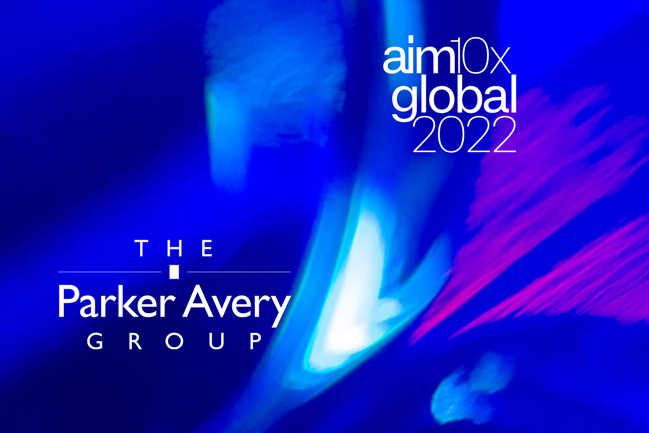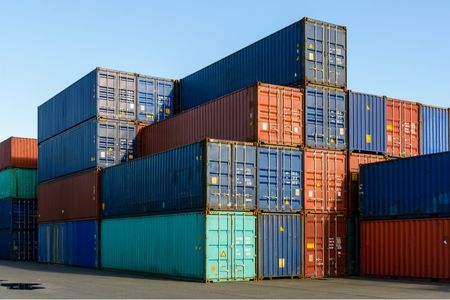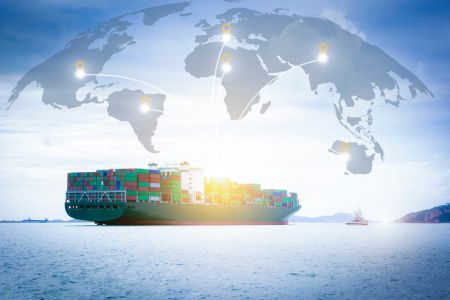
Last week, several members of The Parker Avery Group attended the aim10x Global 2022 event. This was Parker Avery’s second year as a partner in o9 Solution’s three-day virtual event, and the team enjoyed the many interesting speaker sessions, as well as the camaraderie of colleagues across different supply chain disciplines. Members of Parker Avery’s retail consulting team, juggled client schedules to attend as many of the sessions as possible. In this post, we outline several of the event’s most compelling sessions, along with our team’s key takeaways and links to replays.
CONTENTS
Building Digital Capabilities to Transform Planning and Decision-Making
Resiliency in Retail: Transforming the Omnichannel Experience
2022 Strategic Supply Chain Technology Themes
Integrated Business Planning as a Critical Capability
Transform CPG Planning and Execution with Advanced S&OE
The CTO’s Story of their Digital Transformation Journey – AB InBev
Creating Post-Pandemic Resilience in the Fashion and Apparel Industry
Sustainability as a Measure of Supply Chain Success
Google: The Story of their Digital Transformation Journey
Leveraging Advanced Planning Capabilities in the Discrete Manufacturing Industry
Build your Supply Chain Digital Twin to Respond at Scale to Risks and Opportunities
HP Enterprise: The VP of Operations’ Story of their Digital Transformation Journey
The Academic Approach to Supply Chain Digital Transformation
Building Digital Capabilities to Transform Planning and Decision-Making
Session Overview: Digital transformation has become essential for companies that want to succeed in an increasingly volatile and complex business environment. Increasing amounts of data are becoming available and digital-native companies have proven that data is a powerful catalyst in transforming business models. Yet, many companies struggle to turn data points into knowledge.
Speakers: Sanjiv Sidhu, Chairman and Co-founder, o9 Solutions; Chakri Gottemukkala, CEO and Co-founder, o9 Solutions
Parker Avery takeaways:
Two megatrends include supply chain digital transformation and sustainability.
- Supply chain transformation through digital transformation means automating and connecting customers and suppliers to get closer to the market and enable real-time demand signals.
- Companies are becoming more ESG (environmental, social, and corporate governance) centric. ESG is a set of standards to evaluate companies on how far advanced they are with sustainability. The supply chain is the center of ESG transformation.
Companies with an agile integrated business planning (IBP) approach are more likely to succeed.
Watch replay: https://events.hubilo.com/aim10xglobal2022/session/130284
Resiliency in Retail: Transforming the Omnichannel Experience
Overview: The retail industry continues to evolve at a rapid clip. Consumers’ product preferences are shifting significantly. Their channel preferences are changing as well, with a continued step-change to omnichannel. Such transformational shifts in consumer behavior create extraordinary levels of variability, uncertainty, and complexity within supply chains. As such, retailers need to respond to these changes while maintaining margins, service, and efficiencies with optimal planning of inventory, transportation, sourcing, and fulfillment. Now is the time for retailers to challenge the status quo, level up their supply chain competencies, and successfully transform their businesses.
Speakers: Devan Thompson, VP Inventory Planning, Lands’ End; Matt Tull, VP Merchandising & Inventory management Support, Guitar Center; Brady Coady, Associate VP, Canadian Tire; Santiago Poveda, VP Retail, O9 Solutions
Parker Avery takeaways:
The focus must be on the customer’s journey and how retailers influence that journey while providing a seamless experience. This customer-centricity involves customizing and localizing the experience, as well as ensuring a flexible and adaptable supply chain to address customer needs and shopping behaviors.
There is no “one-size fits all” solution. Retailers should rethink the use of the assets and infrastructure they have in place today.
Physical stores, and how they are set up/prepared to adapt and deliver the multiple omnichannel models are critical to achieving the financial benefits of addressing ever-evolving consumer behavior. This evolving role of the store requires new skill sets, capabilities, and scheduling to support omnichannel fulfillment along with the in-store experience.
Retailers and consumer brands must understand the trade-offs and impacts of exposing all channel inventory, considering:
- Weighing the primary goal: Speed to the customer? Optimized cost?
- Find the correct balance when deciding on inventory exposure
Watch replay: https://events.hubilo.com/aim10xglobal2022/session/130290
2022 Strategic Supply Chain Technology Themes
Overview: Having a clear vision, strategy, and well-documented roadmap for supply chain technology is key for organizations. What should supply chain leaders consider as they look at strategic technologies? Christian Titze, Research VP at Gartner will present the 2022 Strategic Supply Chain Technology Themes. He will also do a deeper dive into how companies can leverage them for better supply chain planning and share key recommendations.
Speaker: Christian Titze, VP Analyst, Gartner
Parker Avery takeaways:
Some things never change, timely access to data is critical to driving aligned decision-making and enables all of the next-gen technology capabilities.
Digital twins and control towers, while once-fringe supply chain capabilities are front and center with the new focus on resilience and sustainability.
Watch replay: https://events.hubilo.com/aim10xglobal2022/session/133531
Integrated Business Planning as a Critical Capability
Overview: Why is integrated business planning (IBP) the critical capability to generating business value in uncertain times, make better decisions, and respond faster to changes in the market? Consumer facing companies are confronted with more frequent and a wider variety of disruptions than ever before. Demand fluctuations have always been a challenge, but now CPG companies must also manage quickly changing consumer behavior, evolving global health concerns, inflation, raw material price increases, commodity shortages and more. To deal with the complexity and volatility, consumer business leaders need next-generation IBP capabilities to make the best possible decisions for the entire enterprise.
Speakers: Vineet Khanna, SVP Supply Chain, Nestle; Bart Derde, SVP Quality and Supply Chain, GSK; Angelika Kipor, SVP IBP, PepsiCo; Stephan de Barse, EVP O9 Solutions (host)
Parker Avery takeaways:
The supply chain must be resilient and flexible to enable responsiveness to disruptions that are now a regular part of the end-to-end process.
Data transparency and visibility to all impacted business units are critical to cross-functional collaboration within the supply chain.
Retail leaders are looking to increase visibility, process orchestration, and aligned decision-making (breaking down functional silos). They must allow for scalability and timely and financially sound decision-making. Leaders are also seeking improved performance across multiple disciplines, including forecast accuracy, order rates, inventory turns, and customer satisfaction, as well as reductions in inventory, operating, and expediting costs.
Watch replay: https://events.hubilo.com/aim10xglobal2022/session/130287
Transform CPG Planning and Execution with Advanced S&OE
Overview: The consumer packaged goods industry is transforming as a result of shifting demand and consumer expectations. Many CPGs are leveraging digital technologies to develop more accurate demand sensing and scenario planning capabilities. Learn more about how technologies like o9’s Control Tower turn real-time data into insights that help CPGs quickly respond to demand fluctuations.
Speakers: Uttara Srinivasan, VP Supply Chain Planning, Diageo; Fazlur Rahman, Global head of Demand Planning, Kraft Heinz; Michael Kress, Global VP Planning, ABInBev; Jay Koganti, VP Supply Chain COE, Estée Lauder; Stephan de Barse, EVP, O9 Solutions (host)
Parker Avery takeaways:
A supply chain control tower is traditionally defined as a connected, personalized dashboard of data, key business metrics, and events across the supply chain. A supply chain control tower enables organizations to comprehensively understand, prioritize, and resolve critical issues in real-time.
Control towers are forcing companies to reconsider current “planning” roles and their scope of responsibility. Improved visibility across the extended supply chain supports expanded decision-making authority.
Data-driven business processes are key to being responsive to change, and data is only valuable if you know how to use/action upon it.
Watch replay: https://events.hubilo.com/aim10xglobal2022/session/130299
The CTO’s Story of their Digital Transformation Journey – AB InBev
Overview: The consumer is evolving very fast and their demands are getting more and more sophisticated. At the same time, markets are becoming more mature. With the changing circumstances that impact the supply chain, the role of planning is becoming more and more important. Making and keeping planning as a competitive differentiator requires a combination of talent, process execution management systems, and advanced tools. When those are brought together in one platform, then companies are a step ahead of their competition.
Speaker: David Almeida, Chief Strategy & Technology Officer at Anheuser Busch InBev
Parker Avery takeaways:
AB InBev transformed how their salespeople interact with their retailers by delivering a B2B app platform that enables retailers to order, arrange deliveries, and manage invoices on their own time, as well as Fintech which embeds financial products to extend credit.
It is key to have the right data layer and data analytics infrastructure to make it all work.
Watch replay: https://events.hubilo.com/aim10xglobal2022/session/130288
Creating Post-Pandemic Resilience in the Fashion and Apparel Industry
Overview: The fashion and apparel industry may be facing a long road to recovery in a post-pandemic world. McKinsey Global Fashion Index projects that in an “optimistic” early-stage recovery model, the fashion industry would return to 2019 activity levels in the Q3 of 2022. In a late-stage recovery scenario, a 2019 activity level return would happen in Q4 of 2023. In addition, this industry faces a complex global outlook that includes supply chain constraints, shifts in consumer buying behaviors, and increased pressure to incorporate sustainable practices into the manufacturing process. In this panel, industry thought leaders share insights on how the right technology can dramatically reduce complexity and improve efficiency through the value chain.
Speakers: David Lafitte, COO, Deckers; Gabriella Wortmann, VP Global Planning and Operations, New Balance; Austin Williams, VP Global Planning & Transformation, Crocs; Vishal Mankotia, VP Global Supply Management, Levi’s; Todd VanSelus, VP Client Management, O9 Solutions
Parker Avery takeaways:
Forecast accuracy as a result of the recent non-repeatable events (COVID, etc.) and changing environment is more difficult than ever to improve but it’s still critically important. The pandemic exposed challenges and caused many to reprioritize investments.
Predictive forecasting based on analytics, artificial intelligence (AI), and machine learning (ML) is more responsive to volatility than traditional methods based on history alone.
Matching the supply and demand needs is essential and that involves getting deeper into the supplier relationship, connecting with the sales teams, and expanding to looking at tier 2 and 3 vendors where there was more disruption.
Focus on business process and change management lead the way to successful implementations—software/systems are just enablers.
Watch replay: https://events.hubilo.com/aim10xglobal2022/session/130301
Sustainability as a Measure of Supply Chain Success
Overview: The pressure is on companies to simultaneously perform well and do good for the planet. Addressing this combined challenge requires strategic alignment of transformation priorities such that investments in people, process and technology create progress toward ALL objectives. For those companies that already align purpose and performance the move to digital operating models is a critical step on the path to success.
Speakers: Sheri Hinish, Global Sustainability Services Lead at IBM; Mikel Gutierrez, Head of S&OP Onshore at Siemens Gamesa; Stanton Thomas, SVP, Sustainability at o9 Solutions
Parker Avery takeaways:
Companies must determine their own sustainability objectives, i.e., what does their sustainable model look like? One example could be the vision of people, the planet, and profit acting responsibly and creating equity for all in a circular economy.
Sustainability must be embedded in the culture of the people at the company, and it doesn’t sit with just one person. Multiple stakeholders must be involved.
Watch replay: https://events.hubilo.com/aim10xglobal2022/session/130292
Google: The Story of their Digital Transformation Journey
Overview: To drive global transformation, leaders must facilitate growth through technology and strategic planning. Doing so requires organizations to develop the transformation roadmap to align programs across the value chain, build out critical capabilities, and attract and retain talent. Creating this advanced vision and strategy enables organizations to drive the digital transformation that is the foundation for future success.
Speaker: Vijay Guliam, Head, Technical Programs at Google
Parker Avery takeaways:
Five key value drivers for global business transformation:
- Touchless planning: automating manual planning, ad hoc algorithms help
- Optimizing user experience: eliminate spreadsheets the planning team was using
- Enabling collaboration: reporting across businesses has enabled teams to address supply chain issues
- Exception management: identify blockers and create advanced alerts and a dashboard
- Scaling to support the business: enabling new products and suppliers
Watch replay: https://events.hubilo.com/aim10xglobal2022/session/130305
Leveraging Advanced Planning Capabilities in the Discrete Manufacturing Industry
Overview: There has been a lot of attention recently on using artificial intelligence (AI) and machine learning (ML) for demand forecasting. The consumer goods industry was an early adopter, but these approaches are now being successfully deployed in the discrete manufacturing industry too. Specifically, the power of ML-based forecasting can help both forecast overall market volumes and predict which product configuration will sell in which markets. Another high-value use case is in predicting demand for spare parts.
Speakers: Christophe Mugnier-Pollet, VP of Global Supply Chain at Vestas; Flavio Colombini, Head of Integrated Business Planning at Pirelli; Frank Stegherr, SVP Supply Chain Management & Logistics at Schaeffler; Jason Clark, VP of Industry Strategy at o9 Solutions; Ramzi Braham, VP IT & CIO at Electrical Components International
Parker Avery takeaways:
Incorporating AI/ML in demand planning and demand forecasting is key, but it is critical to look to the outside and answer customer questions and look less internally.
Companies must be able to explain AI and how they got there. Answer questions like, “Do we trust the machine? Can we explain it?” Always take the ML information as a proposal, allowing the people the option of accepting it if they agree with it. Over time people will become more comfortable interacting with AI.
To enable this acceptance, it is important to set a change management plan inside your company.
Watch replay: https://events.hubilo.com/aim10xglobal2022/session/130286
Build your Supply Chain Digital Twin to Respond at Scale to Risks and Opportunities
Overview: The scale and speed of the digital economy, with market fragmentation, channel and business model innovation, and proliferating product variants, has overwhelmed legacy demand planning and supply chain applications. To master supply chain agility at scale you must learn from colleagues who build detailed production process models including process yield and constraints, to respond in real-time to spikes in demand or bottlenecks in supply. In this session, Forrester will share research about the urgent imperative to rethink demand planning and supply chain execution, and how to get started on your supply chain digital twin.
Speaker: George Lawrie, VP and Principal Analyst, Forrester
Parker Avery takeaways:
Companies must expect increased world trade uncertainty, and find solutions to proactively address it.
Supply chain collaboration is critical, whether via control towers, digital twins, or increased automation. Continuing to work in silos (enterprise or supply chain) is antithetical to building resiliency and sustainability.
A digital twin, thoughtfully designed, built, and supported collaboratively, can help organizations react to threats and capture opportunities typically too complex to handle using traditional methods.
(Replay not available.)
HP Enterprise: The VP of Operations’ Story of their Digital Transformation Journey
Overview: Manufacturers are crippled by the high variability in the quality and low accuracy of external forecasts. Running the forecast in Excel didn’t help, as it was impossible to leverage external market drivers to predict demand. Shifting to a next-generation planning platform automates forecast consolidation onto one single platform and makes it easy to incorporate data from external data providers in the planning processes. Pulling it all together and leading the business is the full S&OP process run directly on the technology platform.
Speaker: Joanna Kostecka, VP Global Operations Planning and Materials Management, HP
Parker Avery takeaways:
Skillsets will shift from manually creating forecasts to reviewing and managing exceptions.
Change management is critical to the adoption and execution of digital transformation within the supply chain. Change management starts at the top for funding and allocating the capital as needed. Having the right people driving the change with the skill sets to understand and use the system is key.
Watch replay: https://events.hubilo.com/aim10xglobal2022/session/134177
The Academic Approach to Supply Chain Digital Transformation
Overview: Evolving consumer behavior has changed how businesses interact with their customers. Global supply chains must keep pace, even as business-to-consumer (B2C) behaviors blend into business-to-business (B2B) interactions. Preparing future leaders for such rapid and consistent evolution calls for new ways of thinking about the past, present, and future of the supply chain. Guiding the way are today’s academic leaders who are building the models to transform thought into action.
Speakers: Maria Jesus Saenz, Director Digital SC Lab, MIT; Guillaume Roels, Professor of Technology and Operations Management, INSEAD; Davic Simchi-Levi, Professor, Director of MIT Data Science Lab, MIT; Arnd Huchzermeier, Chaired Professor of Production Management, WHU; Aleem Bandali, Global Head aim10x Executive Council, O9 (session host)
Parker Avery takeaways:
A unified view of demand across the organization is the emerging approach.
Key performance predictors are now more important than traditional key performance indicators. This is a demonstrable shift in focus from what has happened to what is forecasted to occur.
Only 15% of the companies implementing AI are measuring AI.
This transformation of the business is not about replacing people but complementing their skills. Think about change management, the right business processes, and having the right talent.
Watch replay: https://events.hubilo.com/aim10xglobal2022/session/130304
Innovators Connect
Overview: o9 Solutions shares its collective accomplishments over the past year and the company’s vision for 2022. Participants provided thoughts on how to sustain and improve support of their digital transformation journeys going forward, including key challenges they would like to address.
Speaker: Stephan de Barse, EVP of o9 Solutions
Parker Avery takeaways:
Digital transformation of planning processes has resulted in:
- Reduction of lost sales of up to 75%,
- Inventory improvement of up to 75%
- Automation of 80-90% of manual tasks
Further, moving the S&OP process to a weekly frequency increases the agility and responsiveness of the supply chain.
Watch replay: https://events.hubilo.com/aim10xglobal2022/session/130629
You may also like





